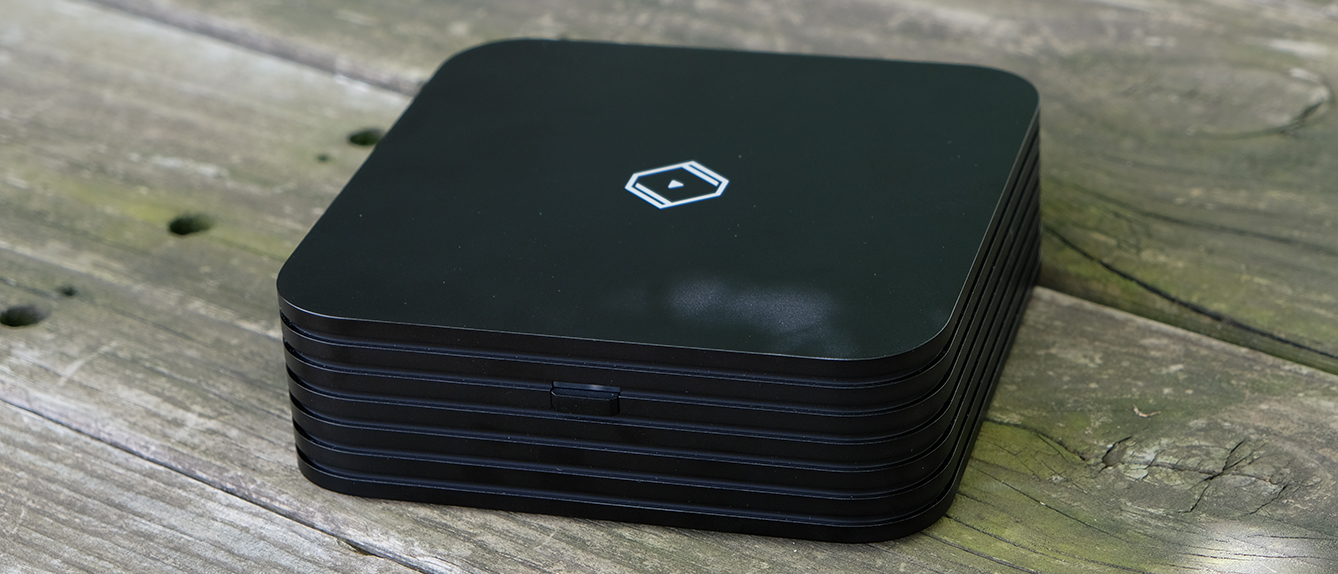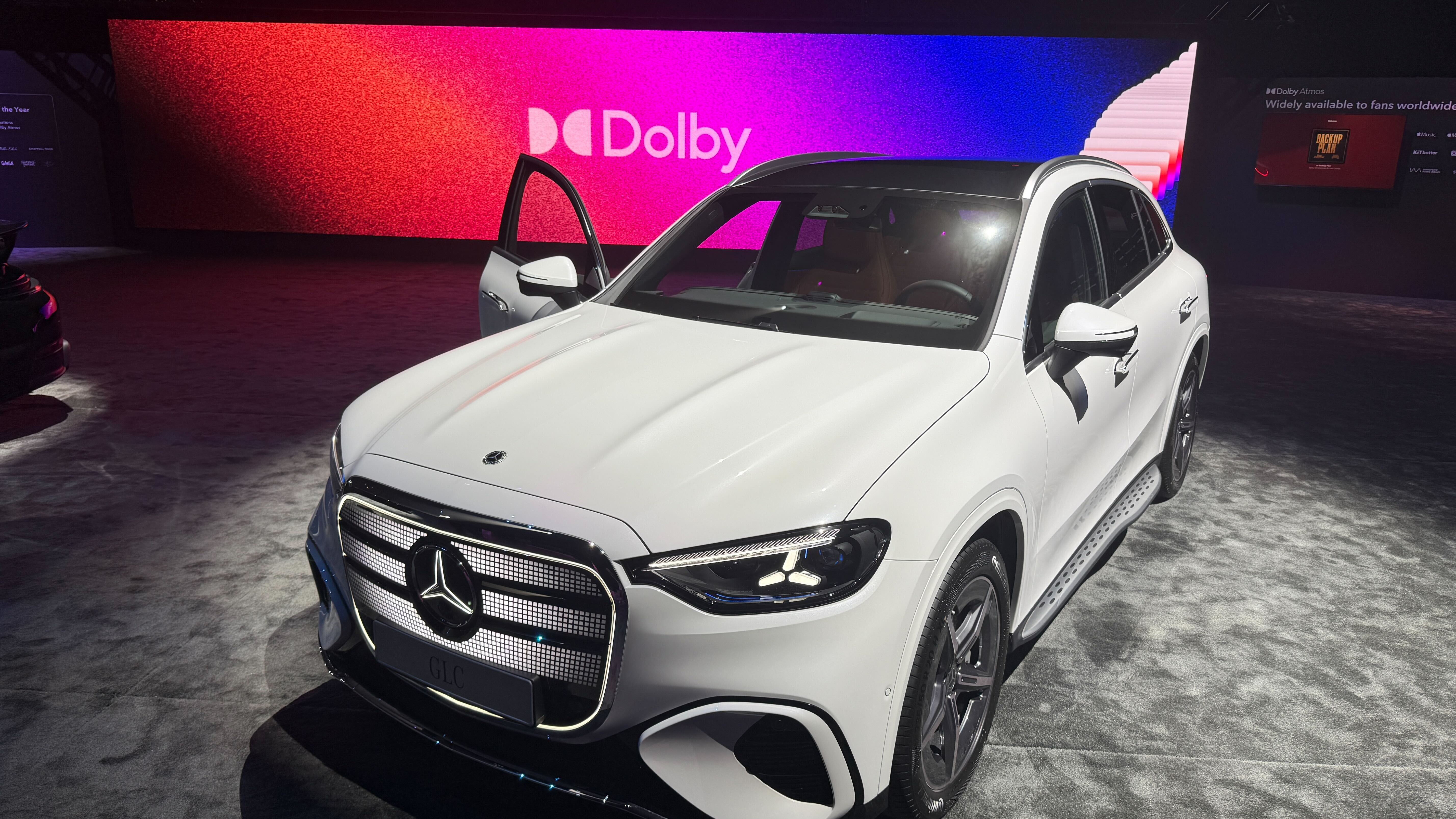What Hi-Fi? Verdict
The Rhein Z1 V2 from Silent Angel is a versatile and reliable music streamer with a great interface, and while it does produce a small amount of noise when run through certain DACs, this won't likely be an issue, especially if you have a decent DAC to pair with it.
Pros
- +
Flexible streaming and serving
- +
Stylish and minimalist
- +
Internal storage upgradeable
Cons
- -
Noise issues with some DACs
- -
Manual input changes required
Why you can trust What Hi-Fi?
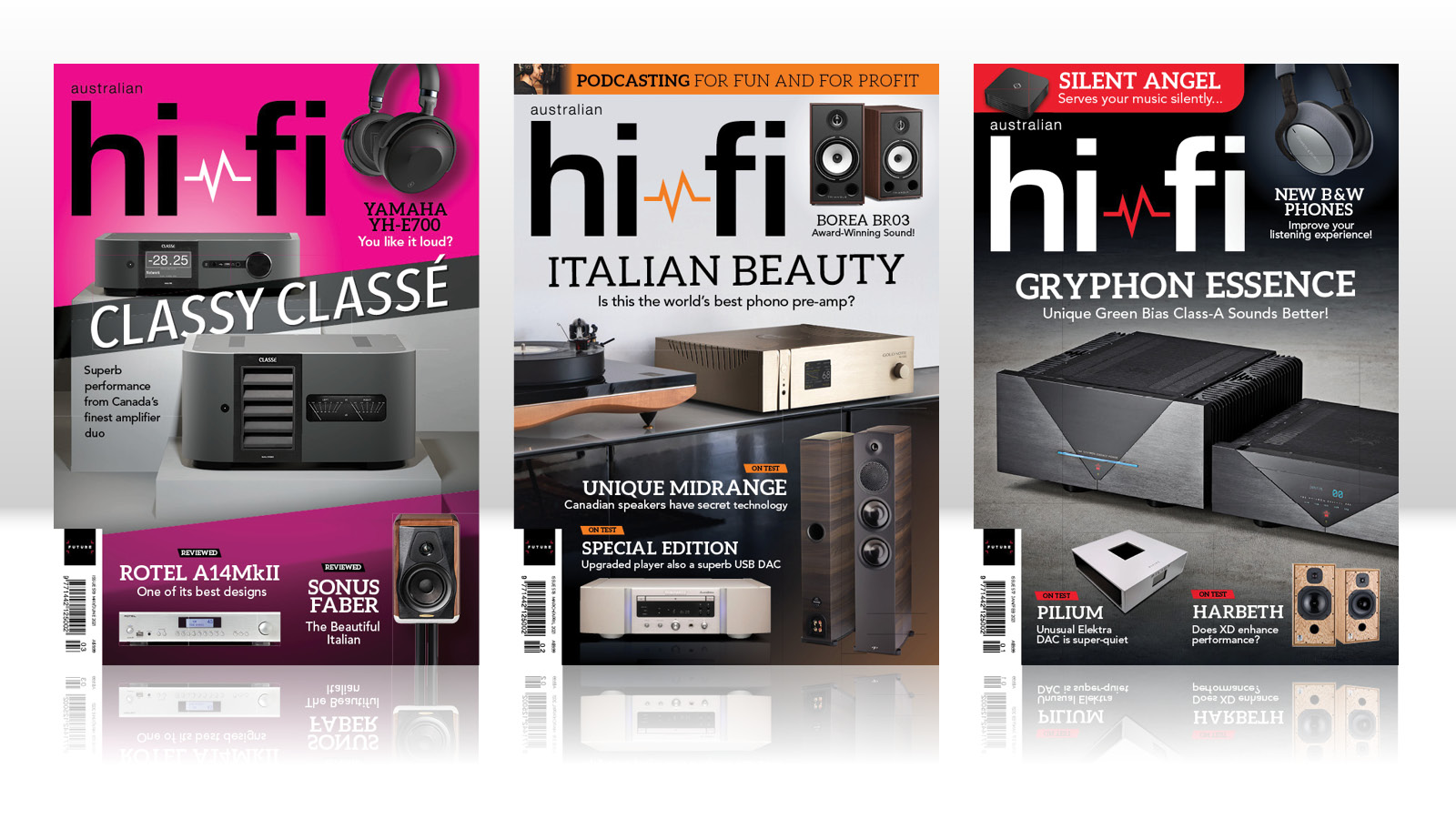
This review and test originally appeared in Australian Hi-Fi magazine, one of What Hi-Fi?’s sister titles from Down Under. Click here for more information about Australian Hi-Fi, including links to buy individual digital editions and details on how to subscribe.
The Silent Angel Rhein Z1 V2 is called a music server. But it perhaps would be better to think of it as an interface to digital music within – and without – your system.
Equipment
To understand the Silent Angel Rhein Z1 V2, it’s probably best that I simply describe what it does and how you use it.
First, you connect it to your home network via Ethernet. None of that Wi-Fi stuff here. The Ethernet is gigabit speed. Take it from me: there is no audio format that will come anywhere close to challenging the speed of a gigabit connection.
Inside it is a 250GB system solid-state drive. This is primarily for holding the VitOS operating system. VitOS itself is a customised Linux based operating system designed for music players, so this combination is designed to prioritise music performance – so no interruptions while your Windows or Mac computer goes off to do something else it considers more important. My review unit was running VitOS-1.1.1414.
That’s it for storage in the standard unit. But you can option it up with a 1TB Silent Angel customised solid-state disc to store your music on. If that’s enough. I am told that most audiophiles who buy the Rhein Z1 V2 buy the basic unit and keep their music on network attached storage.
That makes sense because it makes upgrades easy. Just keep the music on the NAS (upgrading the storage as required, and with it secured by some kind of RAID disc arrangement) and simply change the playing hardware and software as required.
Hearing that made sense to me, because that’s what I do, but it’s good to hear that it’s a preference for others as well.
The latest hi-fi, home cinema and tech news, reviews, buying advice and deals, direct to your inbox.
Now you can manage all this yourself, or you can subscribe to the ROON player and server system, because the Silent Angel Rhein Z1 V2 fully supports the ROON system. This is much used amongst those who want to combine top-end, bit-perfect audio performance with ease of use.
I haven’t stumbled, yet, onto that boat, though one day I may. I want the top-end, bit-perfect audio performance, but after years of carefully managing my digital audio files, filling their ID3 tags with useful indexing information, and structuring the folders on my storage to make sense, I am not yet ready to jump over to automated management. Besides, you have to pay for ROON.
But those who do use ROON have access to such sources as the streaming service TIDAL. But there are other ways of using TIDAL with the Z1 V2. Some non-TIDAL sources are directly supported outside of ROON: Spotify Connect, Apple AirPlay 2 and, of course, DLNA.
That last is a standard system for network audio. Apple AirPlay 2 will work with all modern Apple devices. iPhone users can stream anything their iPhone is capable of playing to the Silent Angel Rhein Z1 V2. You need a Spotify subscription for Spotify Connect.
For DLNA you need music files stored on devices on your network, and suitable server software. Fortunately, the latter is ubiquitous. The unit also has its own DLNA server software built in – MinimServer – so any music on the unit’s internal SSD/s, or on any USB drives plugged into it, can be delivered to any DLNA player or renderer on the network. (And since the Z1 V2 is a DLNA player, it can of course play the stuff on the Z1 V2 acting as a server.)
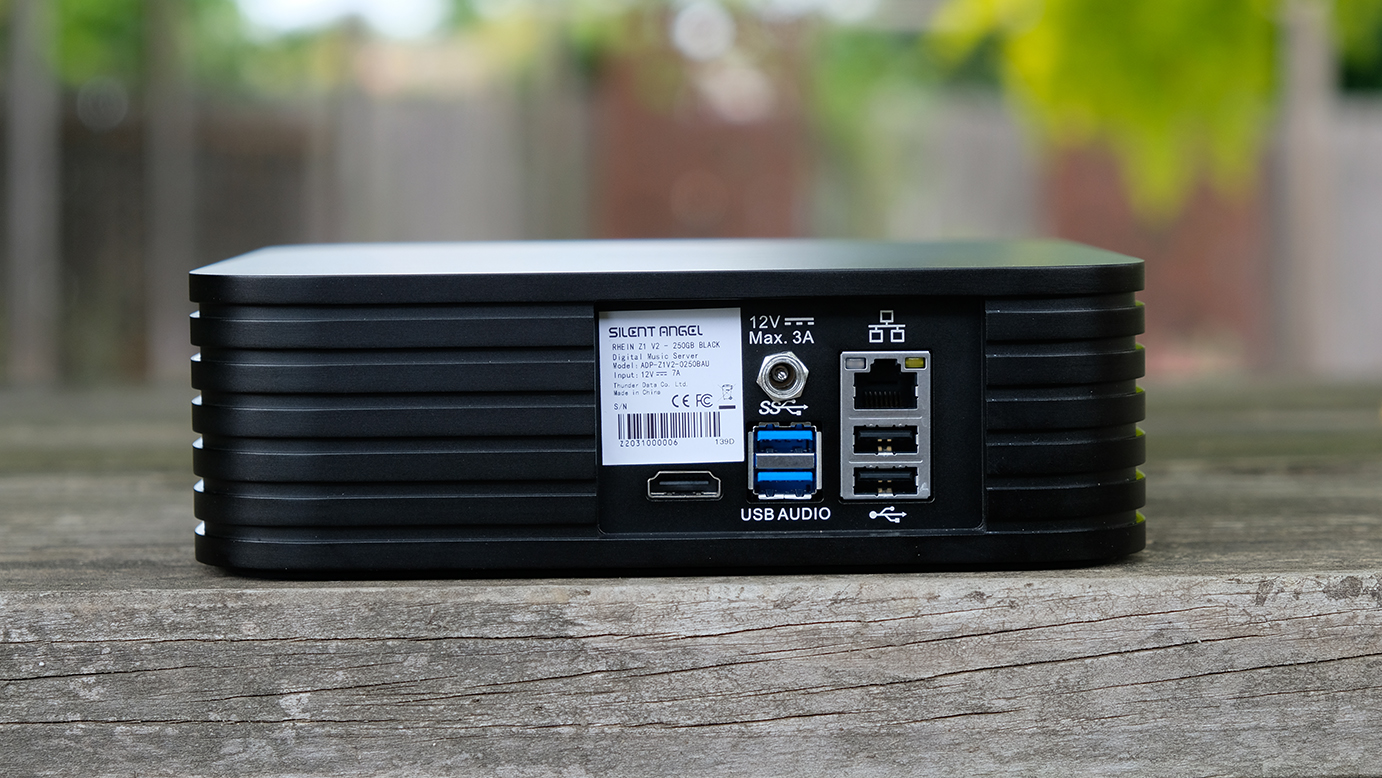
In addition to the Ethernet connection there are four other physical connections fitted: 2×USB-2.0, 1×USB-3.0, and 1×USB for use with an external DAC. Power is provided by an external switch-mode power supply (SMPS) that supplies 12V d.c. via a cable terminated with a standard d.c. plug. There is an HDMI socket, but it’s only a service port for use by technicians, and not to be used for HDMI signals.
Physically, the Silent Angel Rhein Z1 V2 is presented as a cleanly designed square with rounded corners, a little bigger than a Mac Mini, at 200mm wide by 65mm tall by 200mm deep and weighing six kilograms. There’s a computer in there, of course – on the website its performance is compared (favourably) with that of a Mac Mini.
But there are no fans or even vents. Cooling fans make noise, so it’s welcome that they aren’t fitted. Nor are they needed. The unit after extensive use was, to my touch, barely above room temperature. A Silent Angel indeed!
Installation
Apart from the front-panel power/standby switch, there are no controls on the unit. So all control must be done by apps. The VitOS Manager app is available for both iOS and Android from their respective stores. Apart from a few setup functions, the purpose of this app is to allow you to select inputs.
There are no ‘Play’ buttons or such. All that kind of control is performed in other apps.If you are playing Spotify music, you’ll dial up music in the Spotify app. If you’re using DLNA, you’ll use a DLNA app on your device.
I used the apps recommended by Silent Angel: BubbleUPnP on Android and mConnect on iOS. And, of course, for AirPlay use I selected the Z1 as a player in the usual way by using the control panel on an iPhone and on an iPad.
I do think that the user experience could be improved. First, the VitOS Manager app looks very utilitarian. A streamlined look with prominent selection buttons would seem an obvious change.
Second, most devices which support things like AirPlay and DLNA streaming do not have to be explicitly switched to that input. Generally with AirPlay, for example, you find the player on the iPhone’s list of devices, tap it and the device will connect and start playing music. When you change the playback device to the iPhone, the other device just goes back to what it had been doing.
DACs
Of course, to use the main functionality of the Z1, you’ll need a DAC. The question is, which DAC? Well, if you wish to avail yourself of some the pretty impressive high-resolution audio formats around these days, ideally you’ll look for a DAC that supports PCM up to perhaps 384kHz and 24-bits, but at least to 192kHz. And consider at least regular and double-speed DSD: i.e. DSD64 and DSD128. And perhaps DSD 256 as well, which the Z1 does support.
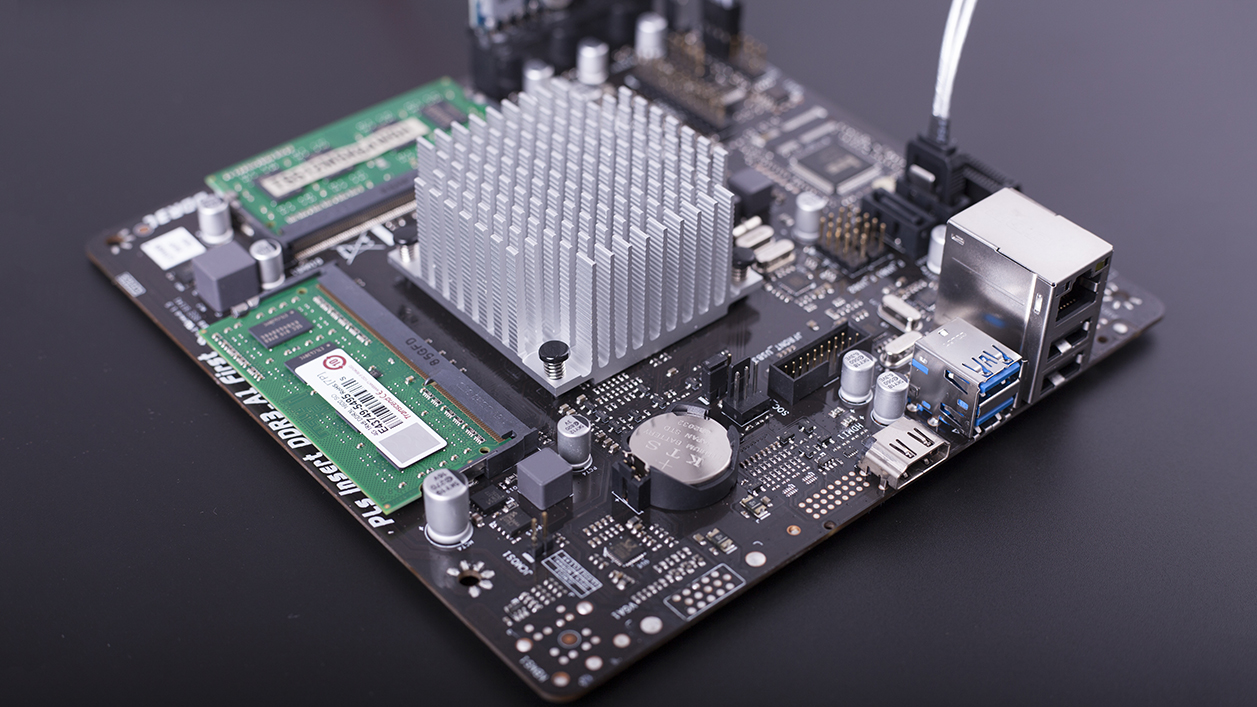
But one other performance aspect occurred to me: noise isolation. I wondered whether the Z1 would pass much electrical hash out of its USB connection. If so, then good noise isolation on the DAC would be important. So while I did virtually all my listening using the Pro-Ject Pre Box S2 Digital DAC, I looked around the office to see what other DACs were available and decided to measure the noise performance of them all.
I ended up with four in total. Two of them, including the Pro-Ject, were USB Audio Class 2.0 devices, while the other two were USB Audio Class 1.0 gadgets. The latter are limited to 24-bit, 96kHz signals, and definitely no DSD.
But since they were both slim portable devices, I had an idea they might pass through noise more readily than the Pro-ject, which has proven able to deliver rather good noise performance even when plugged into a rather noisy computer.
So the first one I went to was an AudioQuest DragonFly Red. I plugged it in, rebooted the unit, and was surprised by a rather high level of background noise. It worked, but it was noisy – and I am not speaking as an audiophile here, with particularly acute hearing. It was obviously noisy. But then, after a while, the noise just went away.
I still have no idea what caused the noise in the first place, or why it went away. And after replicating the exact way I plugged in the DragonFly Red and booted up the Rhein Z1 several times, that clearly audible noise did not reappear. But there was definitely noise there still, just at a much lower level than it had been.
It was audible in between tracks when I was playing back the music at a satisfyingly high level. With 24-bit audio, I measured this noise at –82dB A-weighted. I have measured this DAC at –109.5dBA running from a computer not plugged into anything.
Then I moved to the other tiny unit I had on hand, the Cyrus Soundkey. This one measured at –77.3dBA with 24-bit audio (it does better than –103dBA with a clean connection).
A nondescript Taiwanese desktop XMOS-based DAC, the Silverstone EB01-E, which I’ve had for five years, did rather better at –97.3dBA. But the same DAC managed –107dBA with computers.
Finally, the big surprise was the Pro-ject DAC. With the Rhein Z1 V2 it managed only –96.1dBA with that 24-bit audio. I am so used to it delivering much better than that, even with noisy USB inputs, that I explored a bit further.
First, I plugged the Pro-Ject back into the Surface Pro 2016 and made sure that the computer was powered and connected to Ethernet. The result, in those somewhat adverse circumstances, was a noise measurement of –111.5dBA. I plugged the Pro-ject back into the Silent Angel and it returned within a couple of tenths of a decibel of the original –96.1dB.
That got me to wondering – was the data being transferred somehow as 16-bits rather than 24-bits? That would be an explanation. To check, I repeated the test, but this time fed the test signal in DSD format.
The measured noise level with DSD64 was –95.3dbA. With DSD128 it was –97.8dBA. The Pro-ject DAC reported that it was receiving the relevant DSD format, so there was no question of the audio being bit-depth truncated. I guess that somehow the noise made it past the DAC’s defences.
I have included with this review a graph showing the noise performance of the four different DACs, all with 24-bit audio input, along with the Pro-ject being driven by the Surface Pro for comparison.
In practice, noise was simply inaudible with the two desktop DACs, but able to be perceived with the two portable DACs when used at high playback levels. (But let’s be clear about this. This noise is nothing, really, to do with the digital signal. It is analog noise coming through the USB connection and making its way through the DAC to the analogue outputs.)
Listening
Other that the low level noise permitted by some DACs, there’s little a device like this can do to influence the sound quality – I know some will disagree and will argue even things like the brand of hard disk or SSD can have its effect.
If so, they are beyond my ability to detect. What can more plausibly have an effect on sound is whether the signal is delivered absolutely bit-perfect, and whether any enhancements are properly transmitted.
On these fronts the Silent Angel Rhein Z1 V2 was absolutely perfect. It happily passed through DSD256 to my DAC, which confirmed that the original signal was being received. And it sounded perfect.
As I am writing, I am using the mConnect app on an iPad to stream MQA-encoded music from TIDAL through the Z1 to my DAC. Said DAC confirms the MQA encoding is intact and is unfolding the signal to 96kHz sampling.
One last observation about my time with the Silent Angel is that it worked with utter and total reliability. No weirdness, and nothing at all untoward. It just soldiered on, delivering the music I dialled up on my various devices and assorted apps. Just as you’d want.
Final verdict
All the data representing music signals that went into the Silent Angel Rhein Z1 V2 went through to the DAC exactly, and there’s nothing more I could ask for than that – except for a bit more analogue noise isolation.
But the lack of isolation is unlikely to be an issue for anyone who uses a competent DAC, which I’d assume would be anyone who is reading this review.
Australian Hi-Fi is one of What Hi-Fi?’s sister titles from Down Under and Australia’s longest-running and most successful hi-fi magazines, having been in continuous publication since 1969. Now edited by What Hi-Fi?'s Becky Roberts, every issue is packed with authoritative reviews of hi-fi equipment ranging from portables to state-of-the-art audiophile systems (and everything in between), information on new product launches, and ‘how-to’ articles to help you get the best quality sound for your home.
Click here for more information about Australian Hi-Fi, including links to buy individual digital editions and details on how best to subscribe.
